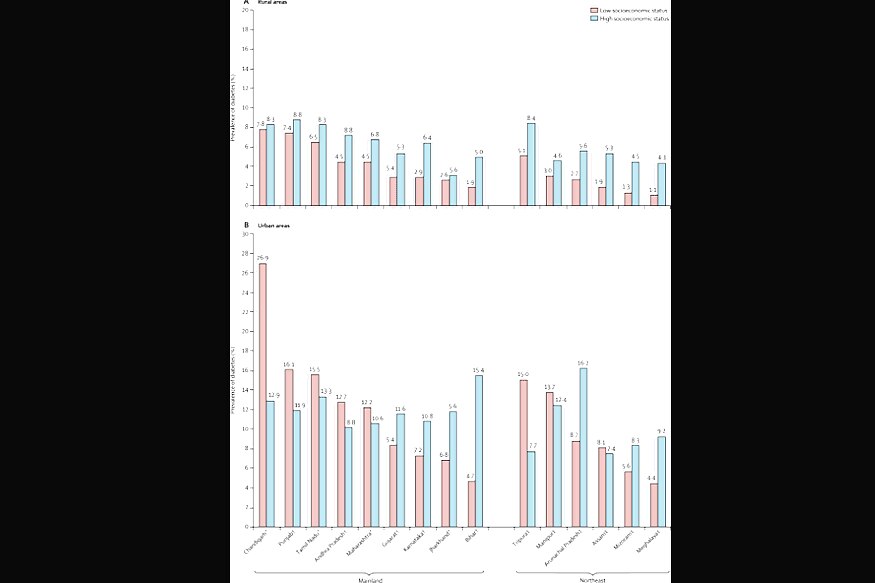
views
New Delhi: As the numbers for diabetes, one of India's biggest ailments, continue to shoot up, the disease has now entrapped the vast number of urban poor. The latest results from an ongoing survey conducted by the Indian Council of Medical Research and the Department of Health and Family Welfare showed higher prevalence of diabetes among the lower socioeconomic status (SES) groups in the "urban areas of the more economically developed states".
Worryingly, we don't know why. In the rural parts of the country, the trend reverses, and those afflicted are the relatively better off.
The Indian Council of Medical Research launched India Diabetes (iCMR–INDIAB) Study in 2008, and the results of Phase 1 — covering Tamil Nadu, Maharashtra, Jharkhand and the Union Territory of Chandigarh till 2011 — were announced in April last year. The study found Chandigarh guilty of the highest prevalence of diabetes and prediabetes, which was re-established by the findings of the next two phases, published in the medical journal The Lancet on June 7. This phase expanded the survey to 51,117 adults across 15 states and one Union Territory, becoming "largest nationally representative study of diabetes in India".

The difference in diabetes prevalence among the rich and the poor in rural and urban areas.
It included data for the first time from six states in the north-east. Chandigarh, with the highest per-capita GDP among regions studied, has a prevalence of 13.6 percent, while the overall rate of the 15 states is 10.3 percent. The health divide among the urban poor and rich is sharply visible — there is a 26.9 percent prevalence rate among the lower SES and a 12.9 percent among the higher.
Tamil Nadu, at 10.4 percent, and Punjab, at 10.0 percent prevalence, came second and third, both mirroring Chandigarh's rich-poor patient trends in urban areas. Bihar, 4.3 percent with the lowest per-capita GDP, and Meghalaya, 4.5 percent, had the lowest rates of diabetes, and both bucked the dominant trend by having a higher number of better off patients, in urban and rural areas.
"The reason why these populations had a higher prevalence of diabetes remains to be studied," stated an accompanying paper in the Lancet by Dr Vijay Viswanathan of MV Hospital for Diabetes in Chennai, adding, "Lower SES populations in urban affluent areas might have increased mental stress due to the difficulties posed by living in urban settings or the high prevalence could possibly be due to environmental pollutants that have been implicated in type 2 diabetes."

Prevalence of diabetes and the GDP of surveyed states.
This is coupled with unawareness of the disease, as 47.3 percent of participants were undiagnosed.
Nutrition, the dietary habits of the affected people, what is available to them at what cost, and how can it be improved, needs to be questioned to know what has led to these alarming results. As Dr. Viswanathan writes, urban poor "generally have high-carbohydrate diets with inadequate intake of fruits and vegetables", exacerbating their already unhealthy living conditions of "makeshift homes and slums close to major roads, exposing them to the smoke and dust".
The study notes, "The main factors driving the diabetes epidemic in both urban and rural areas of India are obesity, age, and family history of diabetes." However, why there is an "an epidemiological transition", the spread of a formerly rich man's disease among the poor who cannot afford to pay out of their own pockets for treatment, needs to be studied further. Dr. Viswanathan referred to a 2010 study by Chennai's MV Centre, of which he is a co-author, which found the annual costs for diabetes to be Rs 1,541.4 billion.



















Comments
0 comment